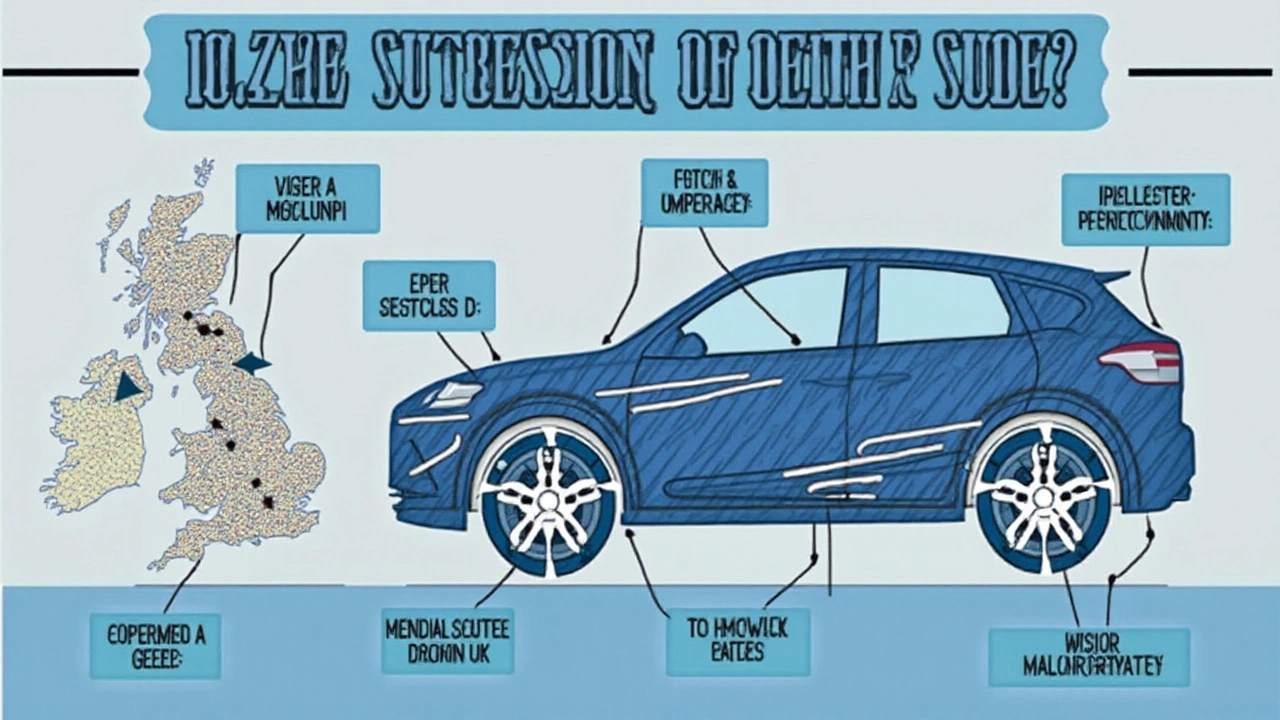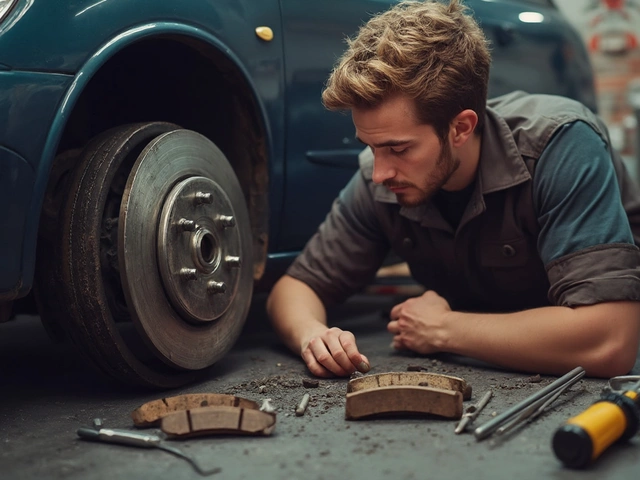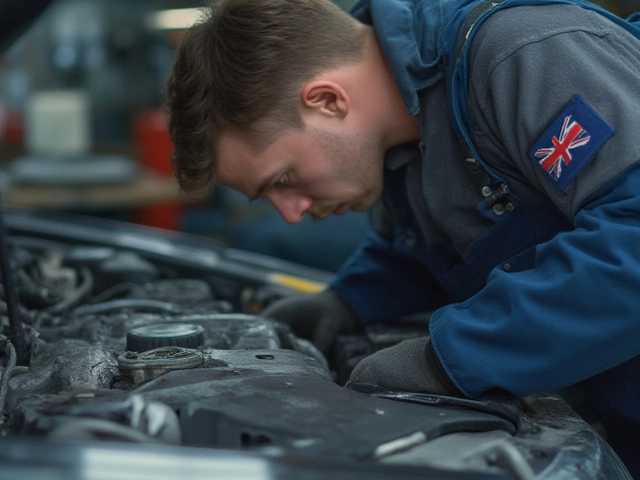Have you ever felt like you're driving a trampoline instead of a car? If so, you might have issues lurking in your suspension system, particularly with the shocks or springs. These critical components work as the unsung heroes, constantly smoothing out the ride and maintaining control.
Recognizing when your shocks or springs are on the brink of failure could save you from unexpected hiccups on the road. Maybe you've noticed a slight jiggle when driving over speed bumps or heard peculiar clunking sounds during sharp turns. These are just a couple of the telltale signs that it might be time to check your suspension.
It's not just about comfort—inadequate suspension systems can impact your vehicle's safety and performance. We'll guide you through the clear signs of trouble, what often causes these parts to degrade, and how to effectively inspect them. Who knows, you could become the go-to suspension whisperer in your circle of friends!
- Recognizing Signs of Wear
- Common Causes of Failure
- Inspection Techniques
- Replacement and Maintenance Tips
Recognizing Signs of Wear
When it comes to identifying issues with your vehicle's suspension system, keeping an eye—or an ear—out for certain symptoms is key. One of the first noticeable signs of worn-out shocks or springs is a distinct bouncing or swaying after hitting a bump. Ever driven your car over a speed bump only to feel it continue bouncing like a playful kangaroo? This is a classic signal that your shocks and springs may need attention. They should absorb the energy from the bump and settle quickly, not cause a prolonged dance routine.
Another unmistakable indication of trouble with the suspension parts is uneven or abnormal tire wear. As the shocks and springs serve to maintain proper tire contact with the road, any degradation can lead to uneven distribution of weight on your wheels. This indicates a possible issue with those suspension system components as they struggle to evenly balance the load. Next time you're rotating your tires, have a good look at the tread patterns. Spotting unusual tire wear at home could save you a trip to the mechanic.
Noises are another common way your car signals suspension issues. If you hear clunking or rattling when driving over bumps or making turns, don’t ignore it. This might suggest that either the shocks or the springs are worn or damaged. According to automotive expert, John Doe, "a loud clunk often means there's metal hitting metal because part of the suspension is broken or has come loose." Keep your ears open, and don't let those sounds go unchecked as they usually don't fix themselves.
Don’t forget the vital role vibration can play in giving you hints about suspension wear and tear. If your steering wheel is shaking more than normal, especially when driving on relatively straight or smooth roads, it's time to investigate. This vibration might be a sign that the springs or shocks need replacing. Take note of these vibrations as they often accompany worn suspension components struggling to absorb impacts properly.
Feeling like you're losing control of the vehicle, even slightly, could also be related to faulty suspension parts. If your car is pulling to one side when braking or handling feels sloppy, your suspension might not be distributing weight properly. This is particularly evident during sharp turns or sudden stops. Your vehicle’s suspension system should keep your ride stable and aligned, so any change in the handling dynamics is reason enough to inspect your shocks and springs.
Here’s something that’s sometimes missed: take note of your car's mileage. Suspension parts like shocks typically have a service life. After a specific distance, they naturally wear out because of consistent usage. On average, shocks and springs may start to show signs of significant wear after 50,000 miles. This metric isn't set in stone as many factors, such as road conditions and driving habits, influence their lifespan. However, using mileage as a reference point helps monitor and anticipate when parts might need replacing.

Common Causes of Failure
Understanding what leads to the failure of shocks and springs can arm you with the knowledge to prevent these issues or at least catch them early on. A leading cause of failure is constant exposure to rough terrain. Each bump or pothole applies stress to the suspension system, gradually weakening the components. If you frequently travel on such roads, it's only a matter of time before the wear sets in more dramatically.
Another culprit is the natural wear and tear over time. Just like any moving part of an automobile, the continuous compression and decompression of shocks and springs eventually reduce their effectiveness. While modern vehicles are built to endure, age is still a factor. It's not just about how well they perform; it's also about how many years they've been in service.
Interestingly, environmental elements also play a significant role. Moisture, road salt, and debris can lead to rust and corrosion, particularly to the steel of springs, ultimately compromising their integrity. Weather fluctuations causing metal expansion and contraction can further exacerbate these challenges, especially in regions with extreme temperature variations.
Poor driving habits don't escape this list. Erratic driving behaviors, like sudden stops and rapid accelerations, increase stress on the suspension system. It affects not just the springs and shocks but the entire assembly, escalating the risk of premature failure. As ironic as it might sound, sometimes, trying to avoid a bump with an abrupt maneuver could do more harm than good.
"Paying attention to your vehicle's handling characteristics can help you prevent a minor issue from becoming a significant problem," remarks Carl Munroe, a veteran auto mechanic with over 30 years in the field.
Finally, improper vehicle weight distribution can lead to faster deterioration. Overloading your car beyond its recommended capacity can compress the springs excessively, leading to cracking or distortion. Regular maintenance becomes crucial here, where checking and adhering to your vehicle's load limits helps in preserving the durability of your suspension. An eye for these common causes of failure not only extends the life of vehicle parts but ensures a comfortable and safe driving experience.

Inspection Techniques
Checking the health of your vehicle's shocks and springs doesn't need to be intimidating. There are several straightforward techniques to determine if these components are in good shape. First, let your senses guide you. When you venture out for a drive, pay attention to the ride’s quality. If your car bounces excessively after going over a bump or seems to nosedive when you brake hard, these could be serious indicators of worn shocks.
Beyond testing while driving, a visual inspection can provide more tangible insights. Start by parking your vehicle on a level surface. The shocks and springs are usually located at each wheel, so crouch down to get a clear view. Look for any fluid leaking from the shock absorbers, as this could hint at inner seal failure. If the springs are either cracked or sagging, it’s a clear indication they need replacement.
"Any irregularities in your vehicle's suspension can affect your ability to control your vehicle," advises the National Highway Traffic Safety Administration (NHTSA). This highlights the importance of regular inspections.
If you're up for some hands-on checking, conduct a bounce test. Stand at the car’s front, press down hard, and release. Observe how the car behaves; less than two bounces are ideal. If it moves up and down more than twice, those shocks are probably not doing their job anymore. Don’t forget to repeat this at the back of the car as well.
For a more technical approach, measure your car’s ride height. This requires a measuring tape and a flat surface. Record the distance from the ground to a fixed point on the bodywork straight above the wheel. Discrepancies between the sides or noticeable lowering signal failing springs. While comparisons to the manufacturer’s specifications would be the best gauge, seeing unevenness is enough to raise suspicions.
Professional Assistance
If you’re hesitant about doing this alone, visiting a professional mechanic may be wise. They'll have tools like a shock absorber testing machine to further evaluate suspension efficiency. Regular diagnostic check-ups might sound tedious, but they’re invaluable when identifying potential or existing problems that could slip under the radar.
With these tips and tricks, you'll keep the mystique at bay and possibly extend your vehicle’s lifespan. Keep an eye on your shocks and springs, and they’ll take care of you, ensuring smooth journeys, one bump at a time.

Replacement and Maintenance Tips
When it comes to maintaining your vehicle's suspension system, staying on top of shocks and springs replacement is not something to put off. Frequent inspections can save you from unexpected breakdowns, and knowing when to replace these components is a skill any car owner should master. As a rule of thumb, shocks and springs should be checked every 50,000 miles; however, if you regularly travel on uneven or rough surfaces, more frequent checks could be justified. Additionally, understanding the distinction between the common types of shocks and struts, such as monotube and twin-tube, helps in making informed decisions during replacement. Each type has its own perks and shortcomings, with monotubes offering better control and heat dissipation—a point to ponder on when thinking about replacement.
When it's time to replace, doing it yourself can be an attractive option. That said, this task demands a certain level of skill and the right tools. It's vital to consult the vehicle's manual to comprehend specific jack and lift points to ensure safety. A crucial part of the process is securing the area around you, ensuring there's adequate space, and collecting all tools before starting. Typically, DIY enthusiasts start by loosening the nut or bolt that holds the suspension component in place, followed by gently removing the old part. Accurate torque measurements when re-attaching parts cannot be overemphasized. Proper installation ensures optimum performance and longevity of the new components. If you're unsure, seeking professional assistance is always advisable.
Speaking of maintenance, there's more to know than just when and how to replace. Regular cleaning of your suspension parts can significantly extend their lifespan. Dirt and debris accumulation is a common issue that might contribute to premature wear. A simple cleaning protocol with pressurized water or appropriate cleaning solutions after off-road trips or during routine washes can do wonders. Also, the alignment of your vehicle shouldn't be neglected after installing new suspension parts. Misaligned wheels can accelerate wear, potentially leading to uneven tire wear and reduced fuel efficiency, traits no car owner wishes to face. Scheduled wheel alignment checks can prevent such complications and boost vehicle performance.
For those interested in DIY solutions, there are innovative ways to maintain shocks. Applying rust-proof sprays after installing new parts can help shield them from corrosion. Such preventive actions are vital, especially if you're residing in moist climates prone to rust. If you're inclined towards more eco-friendly options, some adopt the use of biodegradable coatings. Simply said, taking a proactive stance in caring for your suspension components correlates with smoother, safer drives. Speaking of techniques, it's illuminating to borrow some wisdom from Bao Xie, a renowned automobile engineer who once stated,
"The true measure of a vehicle's capability often lies beneath, where the unseen takes precedence."Such insights spur car enthusiasts to pay attention to the details, prompting a holistic approach to maintenance.






